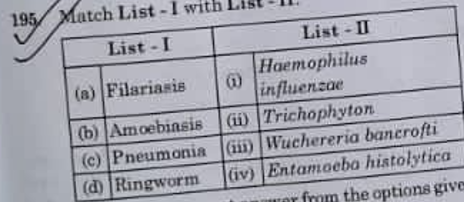Given below are two statements:
Statement I: Chlorine can easily combine with oxygen to form oxides, and the product has a tendency to explode
Statement II: Chemical reactivity of an element can be determined by its reaction with oxygen and halogens.
In the light of the above statements, choose the correct answer from the options given below
Both the Statements I and II are false
Both the Statements I and II are true
Statement I is false but Statement II is true
Statement I is true but Statement II is false
The correct Answer is:B
To analyze the given statements, we will evaluate each statement step by step.
Step 1: Evaluate Statement I
Statement I: Chlorine can easily combine with oxygen to form oxides, and the product has a tendency to explode.
- Chlorine (Cl) is a highly reactive non-metal. It has a high electronegativity and a relatively small atomic size, which contributes to its reactivity.
- Chlorine can react with oxygen to form various oxides, such as ClO, ClO2, Cl2O, and Cl2O7.
- Some of these oxides can indeed be unstable and may have explosive tendencies under certain conditions. For example, Cl2O7 is known to be highly reactive and can decompose explosively.
Conclusion for Statement I: This statement is true.
Step 2: Evaluate Statement II
Statement II: Chemical reactivity of an element can be determined by its reaction with oxygen and halogens.
- The reactivity of elements is often assessed by their ability to react with other elements, including oxygen and halogens.
- Elements that readily react with oxygen typically indicate a higher level of reactivity, as oxygen is a strong oxidizing agent.
- Similarly, reactions with halogens can also indicate reactivity, especially for metals and non-metals.
Conclusion for Statement II: This statement is also true.
Final Conclusion
Both statements are true. Therefore, the correct answer is that both Statement I and Statement II are true.
Answer: Option 2 - Both statements 1 and 2 are true.
---
Statement I: Chlorine can easily combine with oxygen to form oxides, and the product has a tendency to explode.
- Chlorine can react with oxygen to form various oxides, such as ClO, ClO2, Cl2O, and Cl2O7.
- Some of these oxides can indeed be unstable and may have explosive tendencies under certain conditions. For example, Cl2O7 is known to be highly reactive and can decompose explosively.
Conclusion for Statement I: This statement is true.
Statement II: Chemical reactivity of an element can be determined by its reaction with oxygen and halogens.
- Elements that readily react with oxygen typically indicate a higher level of reactivity, as oxygen is a strong oxidizing agent.
- Similarly, reactions with halogens can also indicate reactivity, especially for metals and non-metals.
Conclusion for Statement II: This statement is also true.
Both statements are true. Therefore, the correct answer is that both Statement I and Statement II are true.
Topper's Solved these Questions
Similar Questions
Knowledge Check
Given below are two statements :
Statement I : A second's pendulum has a time period of 1 second.
Statement II : It takes precisely one second to move between the two extreme positions.
In the light of the above statements, choose the correct answer from the options given below:ABoth Statement I and Statement II are false.BStatement I is false but Statement II is trueCStatement I is true but Statement II is falseDBoth Statement I and Statement II are true.Given below are two statements :
Statement I : The pH of rain water is normally 5.6.
Statement II : If the pH of rain water drops below 5.6, it is called acid rain.
In the light of the above statements, choose the correct answer from the options given below:AStatement I is true but Statement II is false.BBoth Statement I and Statement II are falseCStatement I is false but Statement II is trueDBoth Statement I and Statement II are trueGiven below are two statements
Statement 1: Colourless cuprie metaborate is reduced to cuprous metaborate in a luminous flame.
Statement II : Cuprous metaborate is obtained by heating boric anhydride and copper sulphate in a non-luminous flame.
In the light of the above statements, choose the most appropriate answer from the options given belowAStatement I is true but Statement II is falseBBoth Statement I and Statement II are falseCStatement I is false but Statement. Il is trueDBoth Statement I and Statement II are true
Which of the following statements is not correct ? Choose the correct options from the given below.
View SolutionWhich of the following statements is not correct ? Choose the correct options from the given below.
View SolutionRead the statements given below and choose the correct option
View SolutionStatement 1: Aspirin and paracetamol belong to the class of narcotic analgesics.
Statement 2: Morphine and Heroine are non-narcotic analgesics.
In the light of the above statements, choose the correct answer from the options given below:
View SolutionGiven below are two statements:
Statement I: An allotrope of oxygen is an important intermediate in the formation of reducing smog
Statement II : Gases such as oxides of nitrogen and sulphur present in troposphere contribute to the formation of photochemical smog. In the light of the above statements, choose the correct answer from the options given below:
View Solution

